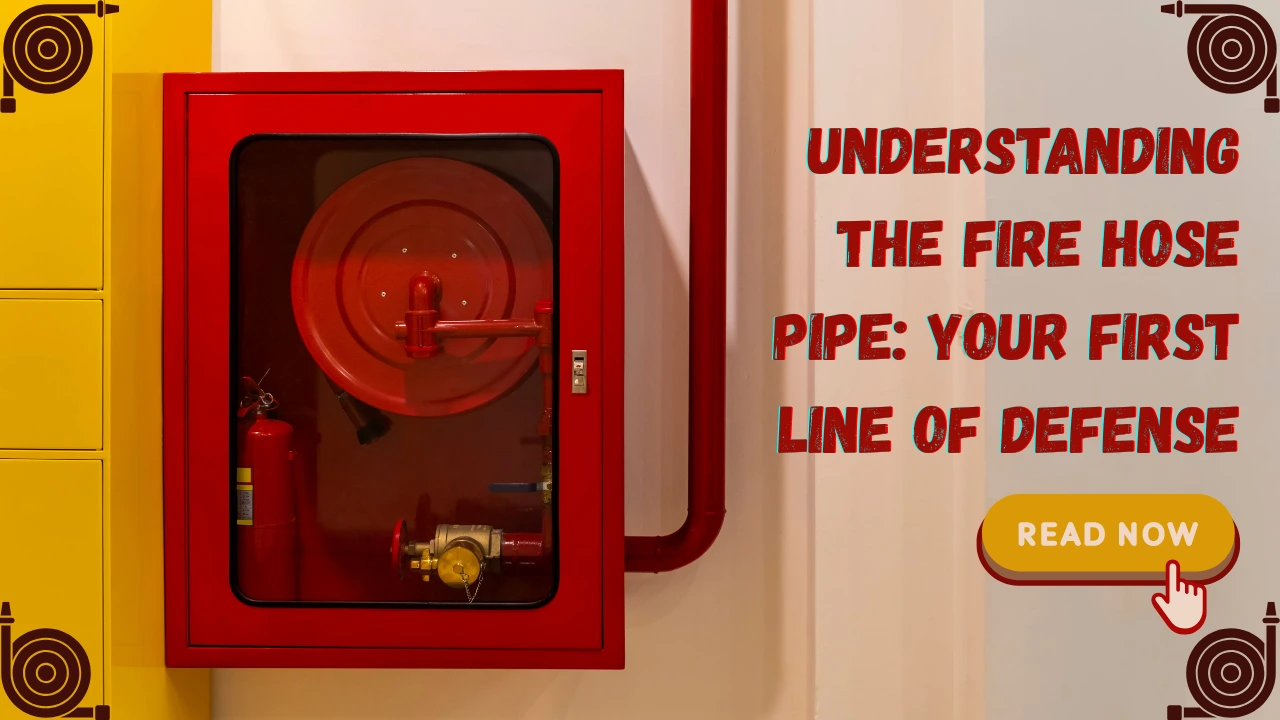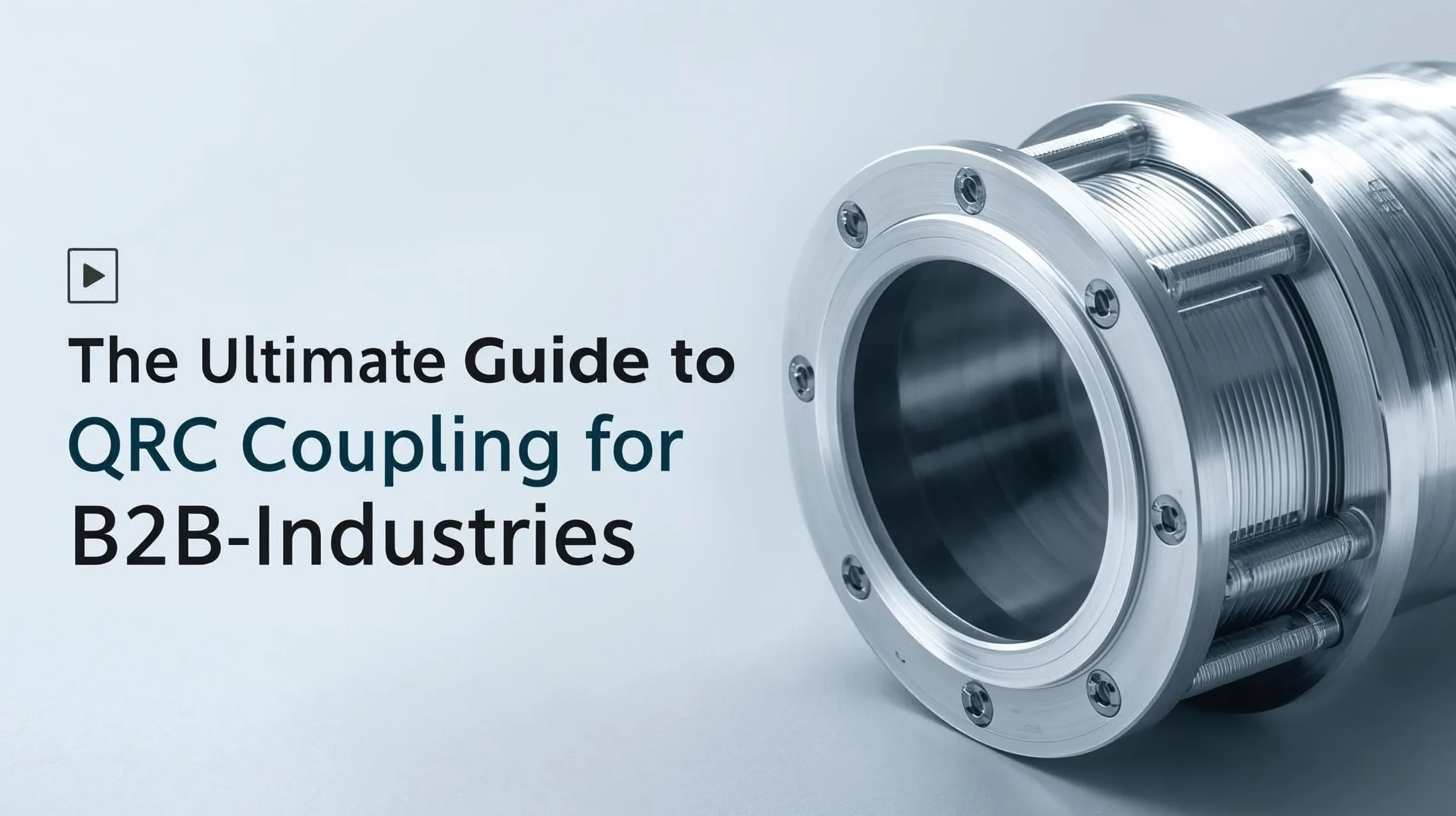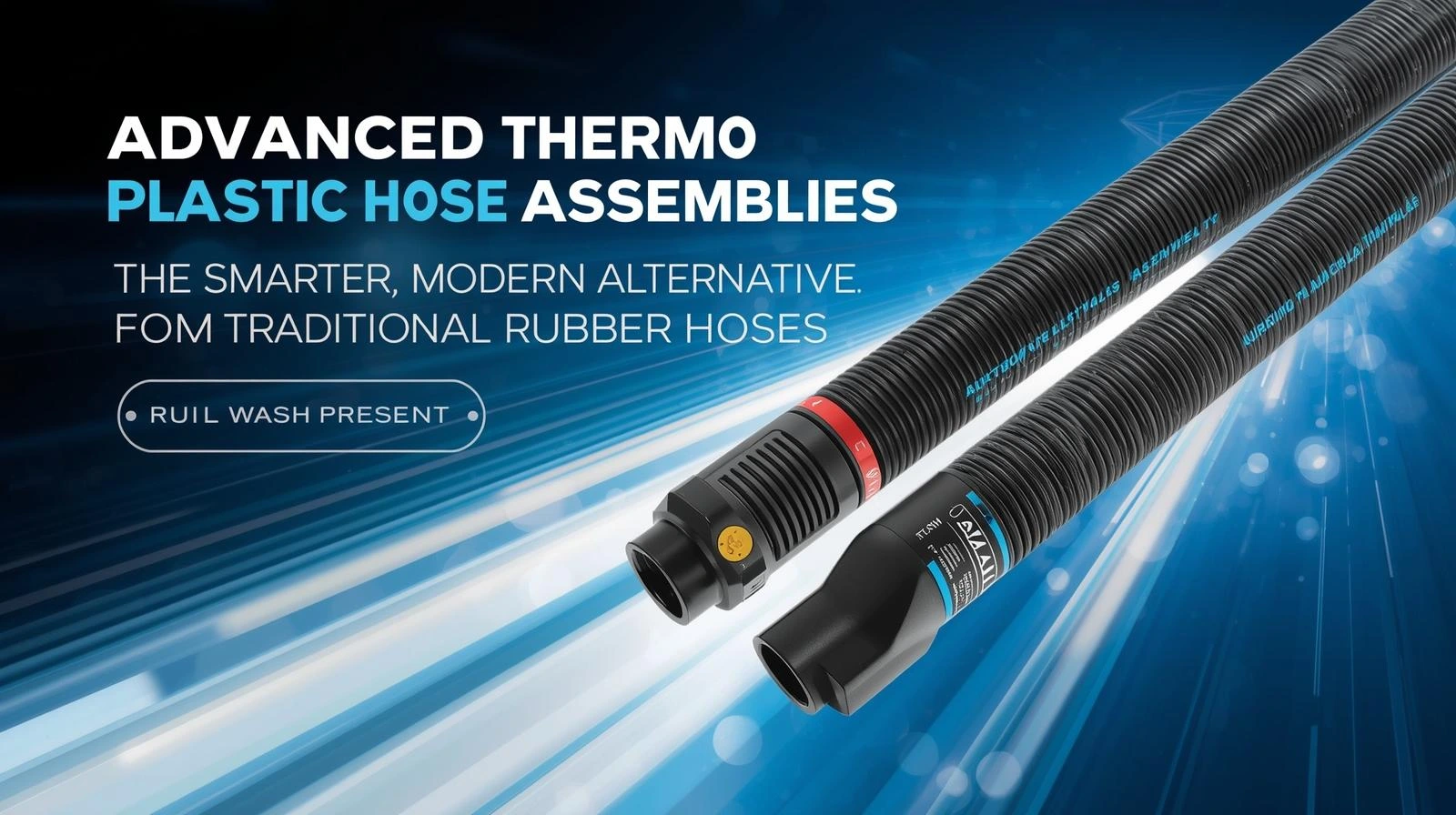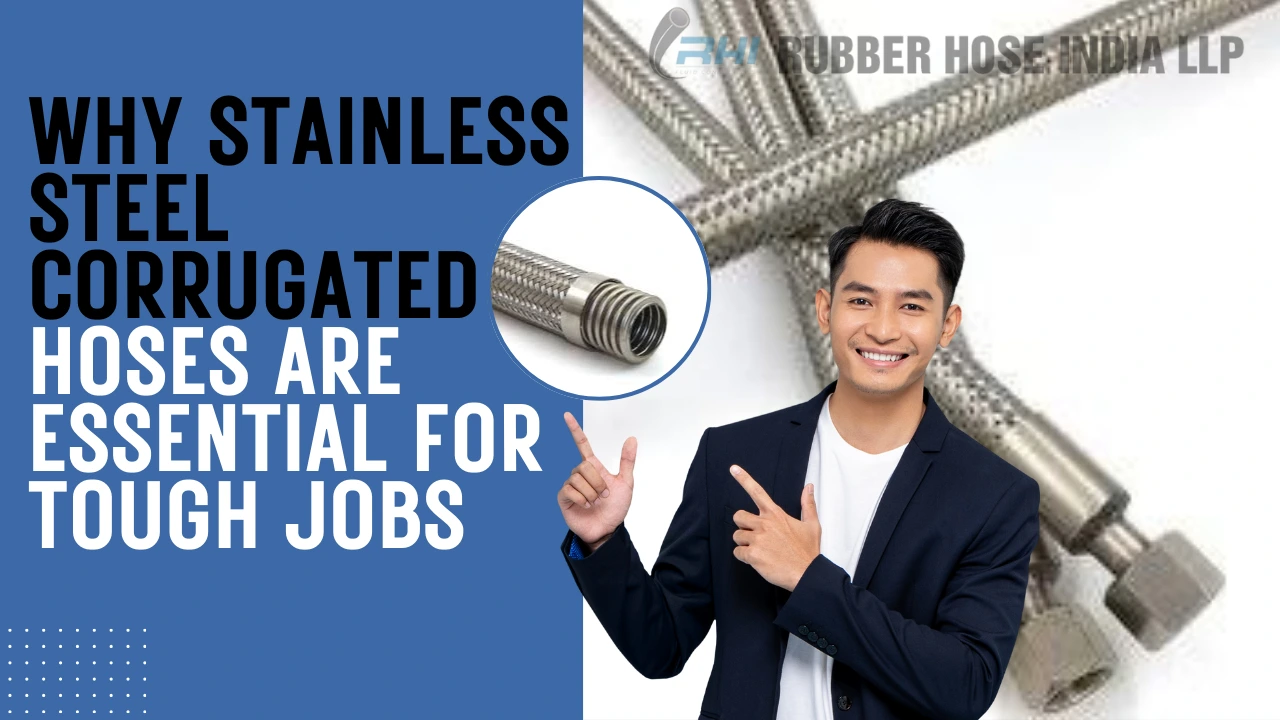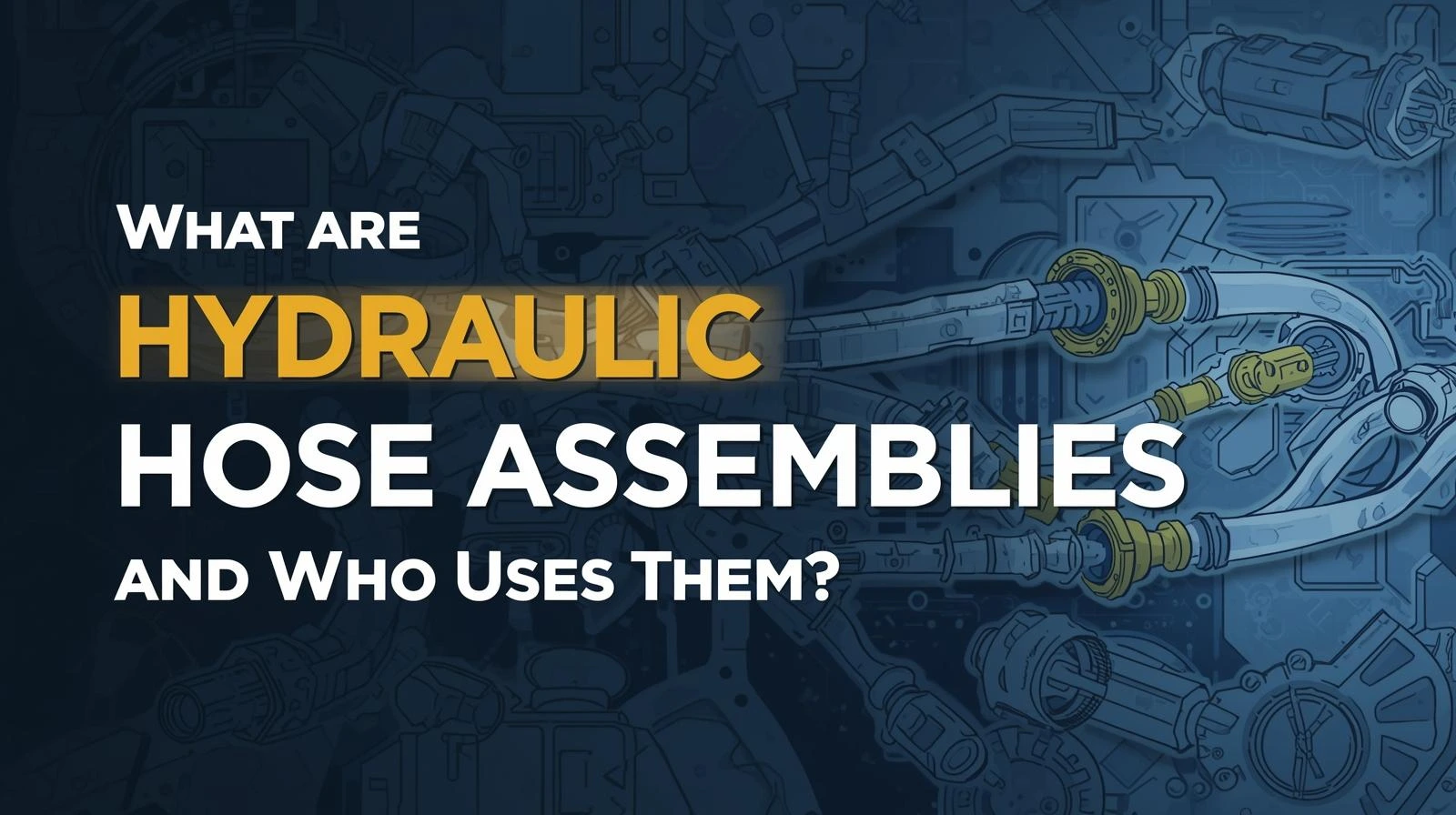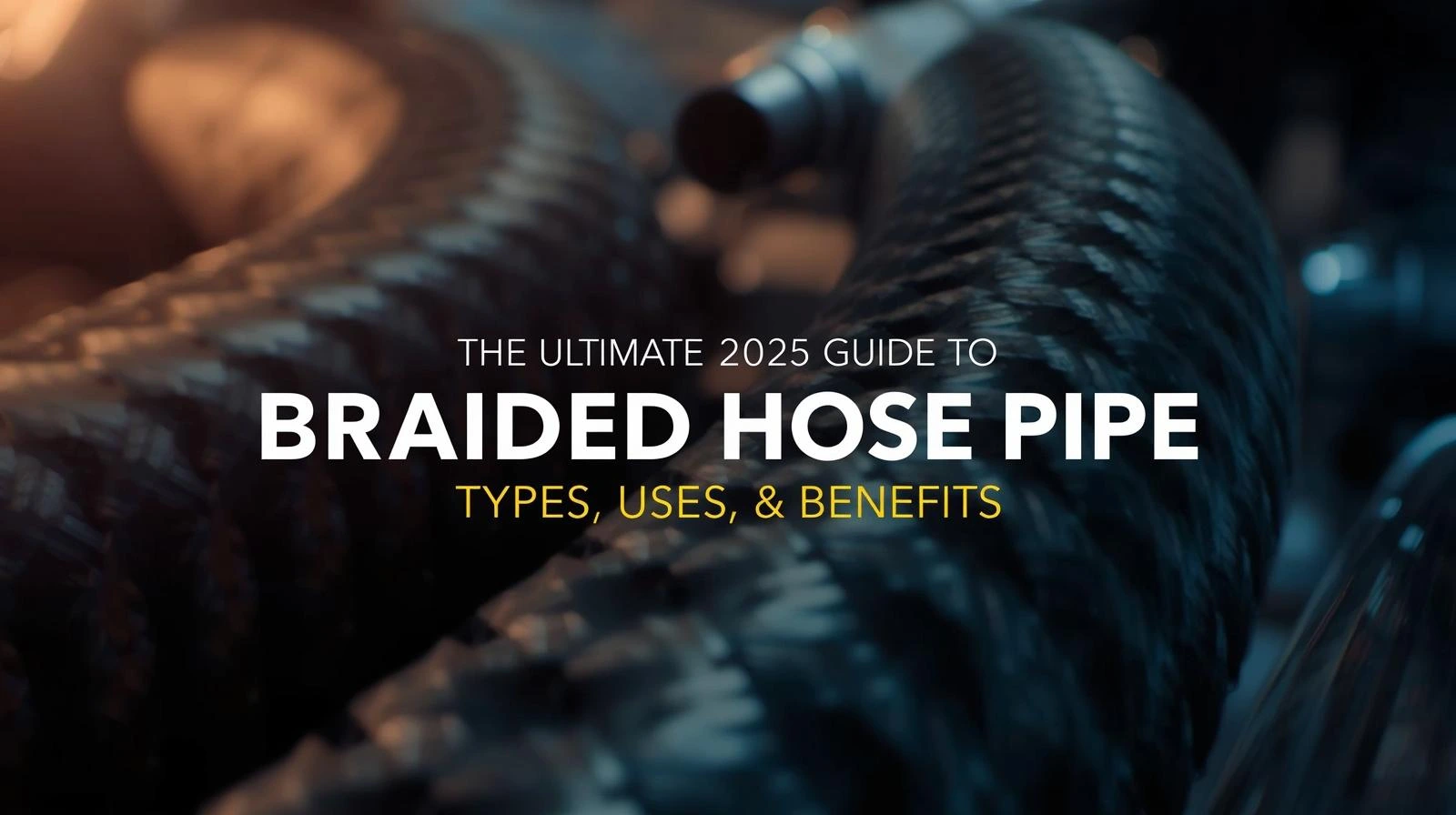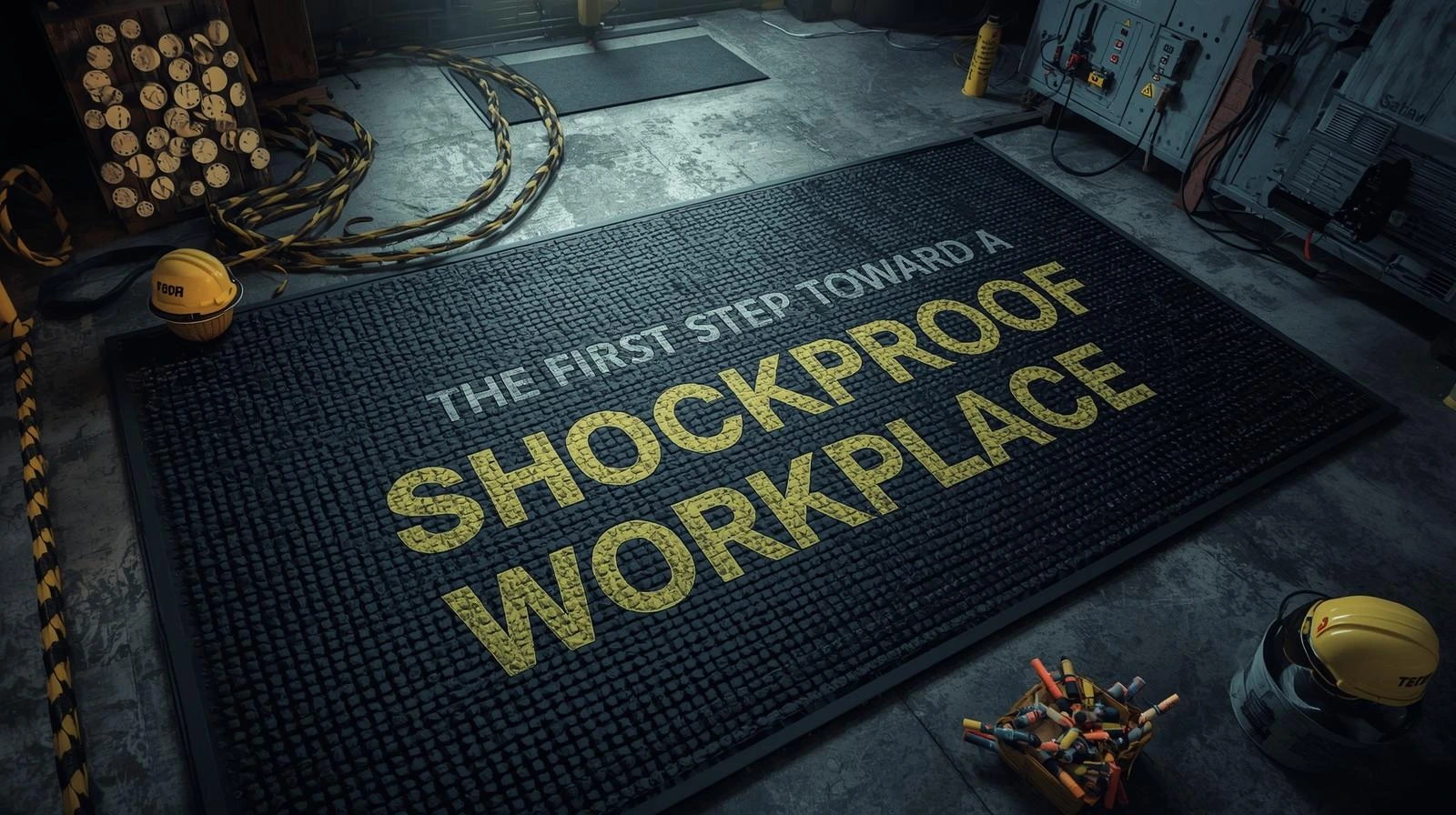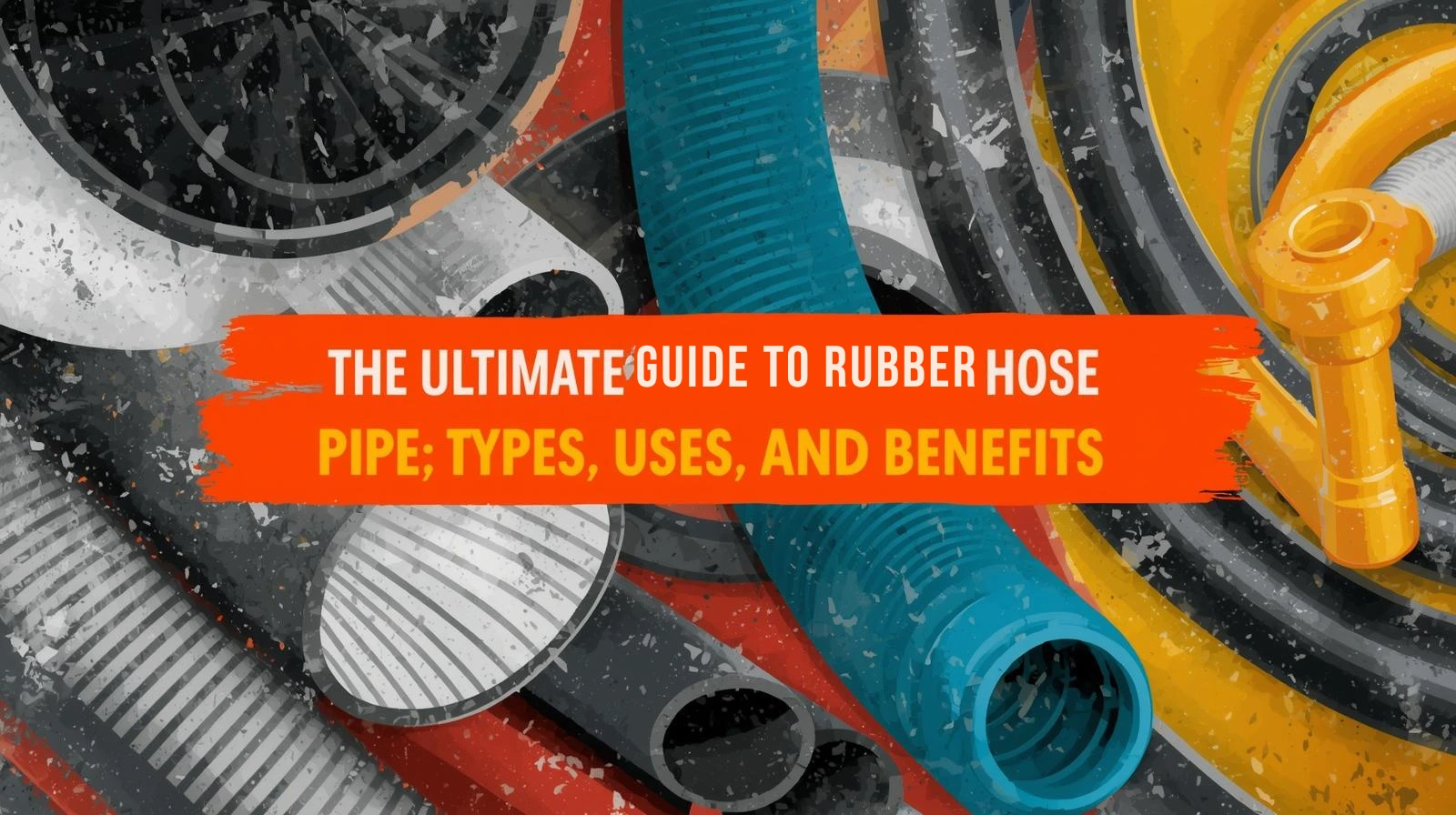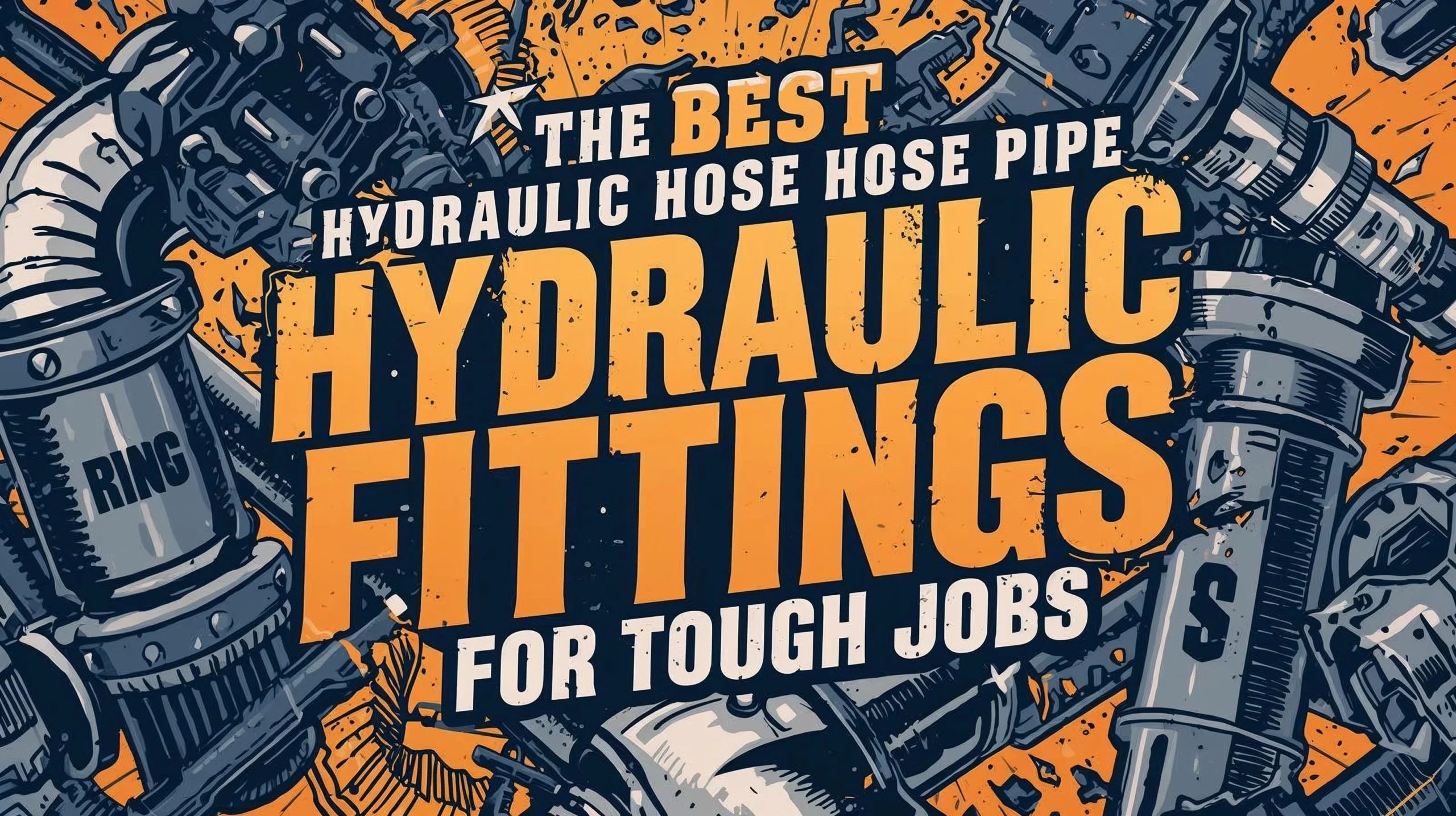When a fire breaks out, every second counts. The difference between a minor incident and a major disaster often comes down to the quality and readiness of the firefighting equipment. At the heart of this equipment is the fire hose pipe, a critical tool for delivering water or fire retardant to quell the flames. It’s more than just a tube; it’s a lifeline for firefighters and a guardian for property and lives. This comprehensive guide will explore everything you need to know about the modern fire fighting hose pipe. We’ll cover the essential fire hose types, their construction, how they connect to a fire hydrant hose system, and the crucial maintenance that keeps them reliable. As a leading manufacturer, Rubber Hose India is committed to producing equipment that meets the highest standards of safety and performance, ensuring that when you need a hose fire solution, it performs flawlessly. What is a Fire Hose Pipe? A fire hose pipe is a high-pressure, flexible conduit used by firefighters and trained personnel to transport water from a source to the site of a fire. The source can be a fire engine’s pump, a building’s standpipe system, or a fire hydrant. Designed to withstand extreme conditions, these hoses are built for durability, flexibility, and high-pressure capacity. The primary function of a firefighter hose is to provide a controlled and powerful stream of water to extinguish flames from a safe distance. Its construction involves multiple layers of material, each serving a specific purpose, from resisting abrasion to preventing leaks under intense pressure. Anatomy of a High-Quality Fire Fighting Hose Pipe Understanding what goes into a fire hose pipe reveals why quality is so important. A typical hose is not a single piece of material but a composite structure designed for maximum strength and flexibility. The Inner Lining The innermost layer is a rubber or synthetic polymer lining. This layer is crucial for water-tightness. It must be smooth to minimize friction loss, allowing water to flow freely and maintain pressure over long distances. Materials like EPDM (ethylene propylene diene monomer) or thermoplastic polyurethane (TPU) are common choices due to their durability and resistance to chemicals and ozone. The Reinforcement Jacket Wrapped around the inner lining is a reinforcement layer, or “jacket.” This is the muscle of the hose, providing the strength to handle high water pressure without bursting. The jacket is typically woven from synthetic fibers like high-tenacity polyester or nylon. Single Jacket Hoses: These have one layer of woven fabric and are lighter, making them suitable for industrial or forestry applications where mobility is key. Double Jacket Hoses: These feature a second woven layer for extra durability and higher pressure resistance. A double jacket is the standard for most municipal fire departments, as it provides superior protection against cuts, punctures, and abrasion—common hazards in a structural fire. At Rubber Hose India, we specialize in manufacturing robust hoses with tightly woven jackets that ensure maximum durability and a long service life. The Outer Coating Some fire hoses, particularly those used in industrial or chemical environments, have an additional outer coating made of rubber or nitrile. This layer provides an extra shield against chemicals, oil, UV radiation, and physical damage. It also makes the hose easier to clean and maintain. Exploring the Main Fire Hose Types Not all fires are the same, and neither are fire hoses. Different situations call for different tools. The main type of fire hose pipe can be categorized by its intended use. 1. Attack Hose An attack hose is what most people picture when they think of a firefighter hose. This is the primary hose used to actively fight the fire. It needs to be flexible, relatively lightweight, and capable of handling high pressure. Attack hoses typically range from 1.5 to 2.5 inches in diameter. They are designed to be maneuvered by firefighters inside buildings and around obstacles. The goal is to get water directly onto the flames, making maneuverability a top priority. 2. Supply Hose / Relay Hose A supply hose, often called a Large Diameter Hose (LDH), serves a different purpose. Its job is to move large volumes of water from a pressurized source—like a fire hydrant hose connection or another pumper truck—to the attack engine. These hoses are much larger, with diameters ranging from 3 to 6 inches or more. They are designed for maximum water flow over longer distances rather than for maneuverability at the fire scene. 3. Suction Hose A suction hose is a specialized, rigid hose used to draft water from an unpressurized source, such as a lake, pond, river, or portable water tank. Unlike attack and supply hoses, which operate under positive pressure, a suction hose must withstand negative pressure (a vacuum) without collapsing. They are essential for firefighting operations in rural areas where fire hydrants are not available. 4. Booster Hose A booster hose is a smaller-diameter (typically 1-inch) rigid rubber hose often kept on a reel on the fire engine. It’s used for small outdoor fires, like car fires or trash fires, where a large volume of water isn’t necessary. It’s quick to deploy and rewind, making it perfect for rapid initial responses. Proper Use and Maintenance: Ensuring Reliability A fire fighting hose pipe is a life-saving device, and its reliability is non-negotiable. Proper care and regular maintenance are essential to ensure it functions correctly during an emergency. Regular Inspection: Hoses should be visually inspected after each use and on a routine schedule. Look for cuts, abrasions, burns, chemical damage, or any signs of wear and tear on the jacket and couplings. Thorough Cleaning: After use, every hose fire pipe should be cleaned. Dirt and grime can be abrasive and wear down the fibers of the jacket over time. If the hose was exposed to oil or chemicals, it needs to be decontaminated according to specific protocols. Proper Drying: One of the biggest threats to a fire hose is mildew, which can rot the fabric jacket. After washing, hoses must be dried
The Ultimate Guide to QRC Coupling for B2B Industries
When it comes to efficient fluid and gas transfer in industrial settings, QRC coupling (Quick Release Coupling) stands out as an indispensable tool. From hydraulic systems to water applications, QRC couplings ensure seamless connections while prioritizing reliability and ease of use. This guide will explore everything you need to know about QRC couplings, including their types, applications, benefits, and how to choose the best one for your business. Whether you’re a user or a business owner, this blog will help you understand why QRC couplings are vital for your operations. What Is a QRC Coupling? A QRC coupling, also known as a quick release coupling or quick connect coupling, is a mechanical device designed to quickly and efficiently connect or disconnect fluid and gas transfer lines without the need for tools. These couplings are commonly used in a variety of industries, including hydraulic systems, water applications, food processing, and chemical plants. Key Features of QRC Couplings Tool-free connections for speed and convenience Leak-proof sealing for safe fluid transfer Compatibility with hydraulic systems, gases, and various liquids Durable construction for long-term performance in demanding environments QRC couplings consist of two main components: Coupler (Socket): Contains a locking mechanism that securely holds the connector. Connector (Plug): Inserts into the coupler to initiate the connection. Types of QRC Couplings Understanding the types of QRC couplings is critical when selecting the right product for your operations. Here are the primary types: 1. Hydraulic QRC Coupling Also known as hydraulic quick release coupling, this type is specially designed for hydraulic applications in industries such as construction, manufacturing, and agriculture. Features: High pressure resistance, quick engagement, and robust sealing. Applications: Used in hydraulic machinery like excavators, tractors, and industrial presses. 2. Quick Release Coupling for Water Designed for water-based systems, these couplings are made with materials that resist corrosion and ensure a tight seal. Features: Easy-to-handle design, anti-leak mechanisms, and lightweight construction. Applications: Irrigation systems, plumbing, and industrial water supply lines. 3. Quick Coupler Quick couplers are versatile types of QRC connectors used across applications requiring quick engagement or disengagement without fluid leakage. Features: Universal compatibility, multiple material options like stainless steel and brass. Applications: Pneumatic tools, water hoses, and medical equipment. 4. Specialized QRC Couplings Non-spill couplings prevent leakage during disconnection. High-pressure couplings are suitable for conditions requiring enhanced durability. Multi-couplings allow for simultaneous connections in complex systems. Materials Used in QRC Couplings The choice of material depends on the intended use of the coupling. Some common materials include: Stainless Steel: Resistant to corrosion, ideal for high-pressure and water applications. Brass: Suitable for low-pressure environments, offers good resistance to corrosion. Aluminum: Lightweight and cost-effective, commonly used in pneumatic systems. Polypropylene: Resistant to chemicals, lightweight, and an affordable option for non-hydraulic systems. Each material offers distinct advantages, and selecting the right one is vital for ensuring compatibility and performance in your operation. Applications of QRC Couplings QRC couplings find applications across a wide range of industries thanks to their versatility and efficiency. Here are some of the most common uses: 1. Hydraulic Systems Hydraulic QRC couplings are essential for ensuring seamless operation in industries like construction, mining, and heavy machinery. 2. Water Supply Systems For irrigation, plumbing, and water treatment plants, quick release coupling for water ensures leak-proof and easy connections. 3. Chemical Transfer Industries handling volatile or corrosive chemicals rely on QRC couplings made of stainless steel or polypropylene to ensure safe, spill-free transfers. 4. Automotive and Aerospace Quick couplers facilitate fluid line connections in tight spaces, enhancing efficiency in assembly lines and maintenance. 5. Pharmaceutical & Food Processing The high hygiene standards in these industries make non-spill QRC couplings a preferred choice to eliminate contamination risks. Benefits of Using QRC Couplings Industries spanning from manufacturing to agriculture and petroleum rely on QRC couplings for several reasons: 1. Efficiency Quick engagement and disengagement save time, particularly in operations that involve frequent connections or disconnections. 2. Safety Leak-proof sealing prevents fluid spills, reducing workplace hazards. 3. Durability Heavy-duty materials ensure long-lasting performance even in challenging environments. 4. Versatility From hydraulic systems to water lines, QRC couplings work across a variety of media, including gases, liquids, and chemicals. 5. Cost Savings Reduced downtime and maintenance lead to lower operational costs over time. How to Choose the Right QRC Coupling With numerous options available, selecting the right QRC coupling for your needs involves considering several factors: 1. Understand Your Application Identify the type of fluid or gas you’ll be working with and the operating conditions, such as pressure or temperature. 2. Select the Right Material The fluid compatibility and environmental conditions will determine whether you need stainless steel, brass, or another material. 3. Check Size and Configuration Refer to a QRC coupling catalogue to ensure the chosen coupling fits your system’s specifications. 4. Pressure Rating Make sure the pressure handling capacity matches the requirements of your operation. 5. Manufacturer Reputation Opt for products from trusted QRC coupling manufacturers to ensure high-quality and reliable performance. Manufacturers with ISO certifications or industry-specific approvals are ideal. Why Businesses Should Prioritize QRC Couplings For B2B business owners, investing in QRC couplings offers unparalleled advantages: Reduce system downtimes for increased productivity. Ensure operational safety with reliable, leak-proof connections. Simplify system maintenance and modifications. Enable compliance with industry standards through high-quality products. Many trusted QRC coupling manufacturers offer customized solutions to meet the specific needs of businesses across different industries. Standards like ISO 7241 ensure that the products meet reliability and safety benchmarks. Innovations in QRC Technology The future of QRC couplings focuses on enhanced safety, increased durability, and eco-friendly designs. For instance: Non-spill mechanisms are being improved to minimize fluid wastage. Advanced materials like composite blends are being developed for lighter and corrosion-resistant options. Final Words Investing in the right QRC coupling can significantly improve the operational efficiency, safety, and longevity of your industrial systems. Whether you’re looking for a hydraulic quick release coupling, a quick release coupling for water, or a versatile quick coupler, Rubber Hose India offers high-quality solutions tailored
Your Complete Guide to Electrical Insulating Mats in 2025
Electricity is the lifeblood of modern industry, powering everything from heavy machinery to delicate control systems. While it drives productivity, it also presents significant safety hazards. Protecting personnel from high-voltage electrical shocks is not just a priority—it is a mandatory requirement. This is where Electrical Insulating Mats play a crucial role. These specialized rubber mats act as a vital line of defense, ensuring worker safety in high-risk electrical environments. This guide will explore everything you need to know about Electrical Insulation Rubber Mats. We will cover why they are essential, how to choose the right one, and what makes high-quality electrical mats a non-negotiable investment. Whether you are a plant manager, safety officer, or an engineer, understanding the function and value of an electrical safety mat is fundamental to creating a secure workplace. What Exactly Are Electrical Insulating Mats? An electrical insulator is any material that resists the flow of electric current. Electrical Insulating Mats, also known as dielectric carpets or switchboard matting, are specifically engineered floor coverings made from dielectric elastomer compounds. Their primary purpose is to insulate workers from the ground, preventing the completion of an electrical circuit through their bodies should they come into contact with a live conductor. These are not ordinary rubber mats. They are manufactured and tested to meet strict national and international safety standards, such as IS:15652, IEC 61111, and ASTM D178. This ensures they can withstand specific voltage levels without breaking down. Using a certified electrical safety mat in front of switchboards, high-voltage panels, and other electrical apparatus is a standard safety protocol across countless industries. Why Are High-Quality Electrical Mats Essential for Workplace Safety? Investing in high-quality electrical mats is an investment in human life and operational continuity. In environments with high-voltage equipment, the risk of an electrical accident is always present. A momentary lapse in concentration or an unexpected equipment fault can have fatal consequences. Here’s why these mats are indispensable: Primary Protection Against Electric Shock: The human body is a conductor of electricity. An electrical safety mat provides a high-resistance barrier between the worker and the ground, interrupting the path for current to flow. This insulation can be the difference between a minor incident and a fatal electrocution. Compliance with Safety Regulations: Regulatory bodies worldwide mandate the use of personal protective equipment (PPE) in electrical work environments. Electrical rubber mats are a key component of this requirement. Using certified mats helps your facility remain compliant and avoid hefty fines or legal action. Building a Culture of Safety: Providing the right safety equipment demonstrates a company’s commitment to its employees’ well-being. It fosters a culture where safety is prioritized, which can lead to increased morale and productivity. Key Features to Look for in Electrical Rubber Mats When sourcing from electrical insulation mat suppliers, it’s crucial to understand the features that define a superior product. Not all electrical mats are created equal. Here are the characteristics of high-quality electrical mats that ensure reliable performance. High Dielectric Strength: This is the most critical feature. It measures the maximum electric field strength a mat can withstand before it breaks down and starts conducting electricity. A good mat will have a dielectric strength far exceeding its intended use voltage. Compliance with Standards: Look for mats that are explicitly marked as compliant with IS:15652, IEC 61111, or ASTM D178. These standards guarantee the mat has passed rigorous testing for voltage, leakage current, and durability. Fire Retardancy: In case of an electrical fire, the mat should not contribute to the blaze. Fire-retardant properties are essential for containing hazards. Resistance to Contaminants: Industrial environments often expose equipment to oils, acids, alkalis, and other chemicals. A durable electrical insulator mat will be resistant to these substances, ensuring its insulating properties are not compromised over time. Mechanical Strength: The mat should have high tensile strength and elongation properties to resist tearing, punctures, and daily wear and tear from foot traffic and equipment movement. Low Leakage Current: Even the best insulators allow a tiny amount of current to pass through. For an electrical safety mat, this leakage current must be exceptionally low (typically less than 1mA) to be considered safe. Textured Surface: A non-slip top surface provides better grip, reducing the risk of slips and falls, especially in areas that may be wet or oily. Understanding Voltage Classifications: Choosing the Right Mat Electrical Insulation Rubber Mats are categorized into different classes based on the maximum voltage they are designed to protect against. Selecting the correct class for your application is non-negotiable. Using an underrated mat can provide a false sense of security and lead to catastrophic failure. Here is a common breakdown of voltage classes based on IS:15652: Class A: Max Use Voltage: 3.3 kV Thickness: 2.0mm Application: Suitable for low-voltage panels and switchboards. Class B: Max Use Voltage: 11 kV Thickness: 2.5mm Application: Commonly used in front of 11kV panels, substations, and industrial control rooms. Class C: Max Use Voltage: 33 kV Thickness: 3.0mm Application: Designed for high-voltage applications, including power generation plants, large industrial facilities, and transmission substations. Class D: Max Use Voltage: 66 kV Thickness: 3.5mm Application: For extra high-voltage environments, providing the highest level of protection. Always assess the maximum potential voltage in the work area and select a mat with a voltage rating that comfortably exceeds it. When in doubt, it is always safer to choose a higher-class mat. Finding the Best Electrical Rubber Mat Prices When searching for the best electrical rubber mat prices, it’s important to balance cost with quality. The electrical insulated rubber mats price can vary significantly based on the manufacturer, certification, class, and material quality. While it might be tempting to opt for the cheapest option, compromising on safety is a risk not worth taking. Here’s how to find value: Source from Reputable Manufacturers: Look for established electrical insulating mats manufacturers, especially electrical insulating mats manufacturers in India, who have a proven track record of quality and compliance. They are more likely to offer reliable products. Request Test Certificates:
Thermo Plastic Hose Assemblies – The Smarter Alternative to Rubber Hoses
Rubber Hose India is a trusted manufacturer and supplier of high-quality industrial hoses, fittings, and assemblies. With years of experience in serving diverse industries, the company is known for delivering durable, efficient, and innovative fluid transfer solutions across India and abroad. What Makes Thermo Plastic Hose Assemblies Different? Unlike traditional rubber hoses, thermoplastic hose assemblies are lightweight, flexible, and designed to withstand tough working conditions. Built with a thermoplastic inner tube, reinforced layer, and protective outer cover, they deliver reliability with less bulk and more efficiency. Why More Industries Are Switching to Thermoplastic Hoses Thermo plastic hoses are quickly replacing older rubber hoses because they: Weigh less and are easier to handle. Last longer in outdoor or chemically harsh environments. Offer higher pressure ratings with better safety margins. Have lower fluid leakage risk due to low permeability. Are recyclable, making them eco-friendly. Key Advantages You’ll Notice Immediately Light and Flexible Easy to install and route through tight or complex spaces. Built for Harsh Environments Excellent resistance to chemicals, UV rays, and abrasion. High Pressure, High Performance Handles demanding hydraulic and fluid transfer tasks with ease. Cleaner and Safer Operation Reduces risk of contamination by keeping fluids pure. Sustainable Choice Thermoplastic materials can be recycled, lowering environmental impact. Where Can You Use Thermo Plastic Hose Assemblies? Hydraulic systems in material handling machines, like forklifts and cranes. Chemical and oil transfer operations. Food, beverage, and pharma applications where purity matters. Outdoor industries where hoses face constant sunlight or weather exposure. Mobile equipment that needs lightweight, flexible solutions. Choosing the Right Hose Assembly When selecting a thermoplastic hose assembly, keep in mind: The pressure and temperature range you need Compatibility with the fluids you’re transferring The bend radius and routing requirements in your setup The type of fittings or connectors required Final Thoughts If you’re tired of heavy, less durable hoses, it’s time to make the switch. Thermo plastic hose assemblies give you flexibility, reliability, and safety—without the compromises of traditional rubber hoses. Rubber Hose India offers durable, high-quality hose assemblies that are trusted across industries. FAQs 1. Are thermoplastic hoses stronger than rubber hoses? They are lighter and more flexible, with better chemical resistance. Rubber hoses, however, may still perform better in extreme heat. 2. Do they work in high-pressure environments? Yes, they are designed for high-pressure hydraulic and fluid transfer systems. 3. Can they be used outdoors? Absolutely. Their UV and weather resistance make them ideal for outdoor use. 4. Are they safe for food and pharma? Yes, FDA-compliant versions are available for sensitive industries. 5. Are they eco-friendly? Yes, many thermoplastic hoses are recyclable, making them a greener choice.
Why Stainless Steel Corrugated Hoses Are Essential for Tough Jobs
When your system needs to bend, absorb vibration, and handle extreme temperatures or corrosive fluids, a regular rigid pipe just would not cut it. That’s where stainless steel corrugated hose assemblies come in-they marry flexibility with strength to keep your operations running smoothly. In this post, you’ll learn what these hoses are, why they excel under pressure, which industries rely on them, and how to choose and care for the right assembly. Breaking Down the Assembly A typical stainless steel corrugated hose assembly includes 3 parts: This combination creates a hose that’s leak‑resistant, highly flexible, and capable of operating in harsh environments. Why Choose Corrugated Stainless Steel Hoses? Key Applications Of Stainless Steel How to Pick & Maintain the Right Hose Why Partner with Rubber Hose India LLP?
What are Hydraulic Hose Assemblies and Who Uses Them?
Hydraulic systems are the lifeblood of modern industrial and mobile equipment. At the heart of these systems lie hydraulic hose assemblies—flexible connections that transfer hydraulic fluid under pressure between different components. Whether you’re running heavy construction equipment, agricultural machinery, or manufacturing units, these assemblies are essential for efficient and reliable performance. Moreover, they help maximize productivity and minimize downtime. In this blog, we’ll break down what hydraulic hose assemblies are, their components, and the wide range of industries that rely on them. What is a Hydraulic Hose Assembly? A hydraulic hose assembly is a complete hose system made up of: These assemblies are designed to handle high pressure, abrasion, temperature extremes, and chemical exposure—making them robust enough for demanding applications.Key Components of Hydraulic Hose Assemblies Let’s understand the components in more detail: Each component plays a critical role in the overall performance and safety of the hydraulic system. Why Use Hydraulic Hose Assemblies? Hydraulic hose assemblies are preferred over rigid tubing in many scenarios due to their: Who Uses Hydraulic Hose Assemblies? Hydraulic hose assemblies are used across a wide spectrum of industries. Here are some major sectors that rely on them: 1. Construction Heavy-duty machines like excavators, bulldozers, cranes, and backhoes operate using complex hydraulic systems. Hose assemblies are critical for tasks like lifting, pushing, and rotating. 2. Agriculture Tractors, harvesters, sprayers, and tillers depend on hydraulic hoses for functions such as steering, braking, and hydraulic attachments like plows and loaders. 3. Mining Hydraulic equipment used in mining—like drills, conveyors, and loaders—requires strong, durable hose assemblies to handle heavy loads in harsh environments. 4. Manufacturing Industrial presses, CNC machines, and robotic arms use hydraulic systems to perform precise, repetitive actions. Hose assemblies help maintain operational efficiency. 5. Oil & Gas Drilling rigs, pumps, and offshore platforms operate under high pressure. Specialized hose assemblies ensure safe fluid handling under such extreme conditions. 6. Material Handling Forklifts, pallet jacks, and conveyor systems rely on hydraulic hoses for lifting and transporting heavy goods efficiently. 7. Marine and Aerospace Hydraulic hoses are essential in steering systems, landing gear, and control mechanisms, often requiring hoses that meet strict safety and environmental standards. Types of Hydraulic Hose Assemblies Depending on the application, hydraulic hoses are designed in various styles: Custom assemblies can also be made based on specific length, fittings, and pressure rating requirements. Maintenance and Safety Proper maintenance of hydraulic hose assemblies is critical: Following manufacturer guidelines and using the right assemblies for the job ensures both safety and efficiency. Conclusion Hydraulic hose assemblies are more than just pipes; indeed, they’re the lifeline of high-performance machines. From construction sites to agricultural fields and manufacturing plants, these assemblies power vital operations by transporting hydraulic fluid safely and efficiently. Choosing the right hose assembly—based on the type of fluid, operating pressure, temperature, and environmental conditions—is key to keeping your systems running smoothly. Always consult with a trusted supplier to get the best product tailored to your needs.
The Ultimate 2025 Guide to Braided Hose Pipe: Types, Uses, & Benefits
In industrial use, selecting the hose pipe is essential to guarantee smooth functioning and safety. Of the numerous options, braided hose pipe is the most popular due to its strength, flexibility, and pressure-carrying ability. For air compressors, hydraulic systems, or water supply, these hoses are reliable in a wide range of industries. In this blog, we are going to discuss the various types of braided hose pipes available at Rubber Hose India LLP and their uses, construction, and specifications. What is a Braided Hose Pipe? A braided hose pipe has an inner core material, often PVC or rubber, which is reinforced with layers of braided nylon, polyester yarn, or wire. This reinforcement provides strength to the hose, making it resistant to high pressure, abrasion from the outside, and temperature fluctuations. Braided hose pipes find broad application in: Industrial and residential water supply Hydraulic applications Air compressors Chemical and oil transfer Irrigation and agriculture Motor vehicle and machine industries Firefighting and safety-related uses Pharmaceutical and food processing plants The configuration of a braided hose pipe supports its use, withstanding the highest environmental factors in addition to the efficiency and life of the component. Kink and bulging are averted by the layer of reinforcement to suit usage when flexibility along with strength is the need. Types of Braided Hose Pipes Rubber Hose India LLP offers a range of braided hose pipes that cater to various industrial needs. Below are the three main types: 1) Nylon Braided Hose Pipe Uses: Nylon braided hose pipe is a multipurpose, general-purpose hose suitable for air compressors, water suction, and delivery. Widely applied in domestic, gardening, and industrial fluid transfer uses. Applicable for low-pressure fluid transfer in domestic and light industrial installations. Construction: Made of a clear PVC core & cover. Strengthened by Polyester Yarn Braiding with flexibility and tensile strength. Lightweight, easy to manipulate. The transparent build facilitates the observation of fluid movement. Sizes Available: ¼” to 2″ ID (Inner Diameter) for diverse industrial and domestic uses. Benefits: It is an inexpensive and cost-effective material for everyday use. Resistant to chemicals and abrasion, ensuring extended durability. Easily installed and serviced. Lightweight with strength. Perfect for water transport in domestic and industrial use. It can be used for car washing, spraying, and irrigation. 2) Wire Braided Hose Pipe Uses: Wire braided hose pipe is suitable for high-pressure to medium-pressure hydraulic applications. Used in hydraulic devices, construction machinery, and high-strength hose applications in industrial processes. For fuel and oil transfer in the chemical and refinery industries. Construction: Comes in 1-wire & 2-wire braided rubber hose variations. The steel wire braiding supports superior pressure resistance and flexibility. Both are produced using high-quality synthetic rubber with oil and weather resistance. The outer covering shields against abrasion, hostile environments, and severe temperatures. Size Range: ¼” to 3″ ID with versatile industrial uses. Specifications: Meets DIN, EN & SAE 100R1, R2, R16, R17, R19 standards Benefits: Withstands harsh pressure and temperature environments. It offers excellent resistance to wear and tear. Suitable for hydraulic fluid and oil-based uses. Extremely long-lasting for prolonged industrial application. Resistant to weather, ozone, and UV exposure. Find applications in heavy-duty building, mining, and offshore industries. 3) Yarn Braided Hose Pipe Uses: Yarn braided hose pipe is ideal for high-pressure to medium-pressure hydraulic applications. Widely applied in the automotive, oil, and gas sectors for effective fluid transfer. Best suited for flexible applications where movement is necessary. Construction: 1-wire & 2-wire braided rubber hose options available Equipped with a high-strength yarn reinforcement for added performance. Made of top-grade rubber to withstand environmental and chemical damage. The synthetic rubber cover ensures added durability and extended service life. Size Range: ¼” to 3″ ID, with a range of options for various industrial uses Specifications: Complies with DIN, EN & SAE 100R1, R2, R16, R17, R19 standards. Benefits: Easy to install and highly flexible. Durable against harsh environmental conditions, oil, and heat. High-pressure-handling capacity. Suitable for hydraulic systems and industrial uses. Vibrations are absorbed by it, relieving stress from connected equipment. Works well with various hydraulic fluids and chemicals. Why Choose Braided Hose Pipes from Rubber Hose India LLP? With respect to choosing the best-quality braided hose pipes, Rubber Hose India LLP is one such reliable manufacturer and supplier. Here’s why: High-Quality Materials: Made from the finest quality PVC and rubber, with an emphasis on durability and dependability. Strict Quality Standards: Complies with international standards (DIN, EN, SAE) for high-pressure rating Versatile Applications: It is ideally suited to various industries like agriculture, construction, automotive, and hydraulics. Affordable Pricing: Provides affordable yet non-compromised solutions. Customizable Solutions: Comes in several different sizes and specifications to suit customer needs. Expert Support & Consultation: Offers advice on choosing the most suitable hose pipes for a given application. Conclusion Braided hose pipes are critical parts of many industries based on their flexibility, strength, and durability. If you are looking for a nylon braided hose pipe that can be used for multiple applications, a wire braided hose pipe for pressure hydraulic use, or a yarn braided hose pipe for improved strength, then Rubber Hose India LLP is here to provide the solution for you. By selecting high-quality braided hose pipes, companies can guarantee safe and efficient fluid transfer with reduced maintenance expenses. These hoses provide better performance under harsh conditions and are a reliable option for various industries across the globe. For bulk purchases, tailor-made solutions, or professional advice, contact Rubber Hose India LLP today and discover the ideal braided hose pipe for your requirements! Contact us to learn more about our comprehensive range of hydraulic and industrial hose solutions.
Electrical Insulating Mat: The First Step Toward a Shockproof Workplace
Where electricity is at the heart of operations, occupational safety assumes supreme importance. The electrical insulating mat is among the most critical safety equipment in such workplaces. To insulate workers against electrical shocks, these mats form an absolute safety shield between electric equipment and the workforce. Rubber Hose India LLP offers superior quality electrical insulating mats conforming to the highest international safety standards for the best safeguarding of your workforce. What is an Electrical Insulating Mat? An electrical insulating mat is a rubber sheet of high-dielectric strength that does not allow direct contact between an employee and the ground, hence the risk of electric shock is minimized. Such mats are widely placed in front of live electrical panels like switchboards, control panels, transformers, and other electrical systems of high voltage. Whether at manufacturing facilities, power production units, or electrical maintenance shops, electrical insulating mats prove to be important in reducing accidents and maintaining safety. Applications of Electrical Insulating Mat The electrical insulating mat is widely used in environments with high human exposure to electric current. The common applications include: Features of Rubber Hose India LLP Electrical Insulating Mats At Rubber Hose India LLP, our electrical insulating mats are produced to provide high-performance and rigorous safety standards. Here are the primary features that set our mats apart: All these characteristics make our electrical insulating mats extremely reliable and ideal for high-voltage settings. Voltage Classification of Electrical Insulating Mat Various electrical systems need multiple levels of protection. That is why we provide electrical insulating mats with various voltage classes as per industrial needs: Class Max. Use Voltage (kV) AC Proof Voltage (kV) Di-electric Strength (kV) Thickness A 3.3 10 30 2.0 mm B 11 22 45 2.5 mm C 33 36 65 3.0 mm D 66 70 110 3.5 mm These voltage classes enable industries to choose suitable electrical insulating mats according to their voltage protection requirements. Available Sizes and Customization Options Whether you require an industrial-standard electrical insulating mat or a special one, we have bespoke solutions for all industrial requirements. Why Choose Rubber Hose India LLP for Electrical Insulating Mat? As a renowned industrial safety equipment manufacturer and supplier, Rubber Hose India LLP has earned a reputation for providing higher-quality electrical insulating mats with the highest standards of safety, durability, and performance. Our mats are so reliable across industries because: When you opt for Rubber Hose India LLP, you are investing in quality, reliability, and safety. Electrical Insulating Mat: A Key Component in Workplace Safety An insulating mat is not merely rubber—it is a tool for saving lives from deadly electric shock. In the world of industry today, a safe working environment is no longer a choice—it’s a requirement. As people become more concerned with workplace safety, placing electrical insulating mats is a step in the direction of creating a compliant and safe environment. Industries need to invest in certified electrical insulating mats to minimize risks, meet safety standards, and provide smooth productivity. Conclusion If you’re searching for a solid safety solution for your electrical system, the electrical insulating mat is a definite must-have. It provides unparalleled protection, withstands extreme weather conditions, and meets the utmost safety standards. Rubber Hose India LLP is proud to provide electrical insulating mats that not only live up to but surpass industry standards. They come in a range of sizes, thicknesses, and voltage ratings, all aimed at ensuring your workers are protected and your operations are smooth. Protect Lives. Prevent Accidents. Choose Rubber Hose India LLP’s Electrical Insulating Mat Today!
The Ultimate Guide to Rubber Hose Pipe: Types, Uses, and Benefits
Rubber hose pipe is vital to various industries, providing flexibility, strength, and efficiency in fluid transportation. They are also important for ensuring smooth operations for industrial, agricultural, automotive, or domestic use. Rubber Hose India LLP offers high-quality rubber hose pipes that meet various needs and provide maximum performance and durability. This guide will assist you in understanding the different types, uses, and benefits of rubber hose pipes. What is a Rubber Hose Pipe? A rubber hose is a soft, hollow pipe used to move liquids, gases, or other substances. Made from synthetic or natural rubber, rubber hoses provide better flexibility, wear resistance, and durability against adverse conditions. They are reinforced with synthetic fibers or metal wire for strength and durability. Types of Rubber Hose Pipes 1. Industrial Rubber Hose Pipe Industrial use demands high-strength and high-performance hose pipes. These are: 2. Rubber Hose Pipe for Automotive Automotive industries use rubber hoses for fuel, coolant, and brake fluid transfer. The most common are: 3. Agricultural Rubber Hose Pipe Rubber hose pipes are essential in agriculture for irrigation and fluid handling: 4. Food-Grade Rubber Hose Pipe Food processing industries need hoses that meet safety standards for handling consumables: 5. Household & Utility Rubber Hose Pipe For everyday home and utility applications, rubber hoses are multi-functional: Key Benefits of Rubber Hose Pipes 1. Durability & Flexibility Rubber hoses are flexible and have a long working life, so they can be used in numerous applications. They are resistant to bending, twisting, and high movements without breaking or cracking. 2. High Temperature & Pressure Resistance Industrial and hydraulic rubber hoses are built to resist high temperatures and pressure, maintaining efficiency in tough environments. 3. Chemical & Abrasion Resistance Rubber hoses are chemical corrosion as well as abrasion-resistant, which makes them suitable for use in industries handling aggressive fluids and harsh surfaces. 4. Leak-Proof & Safe With better sealing performance, rubber hoses are leak-free and provide safe fluid transfer in delicate applications like food and pharmaceuticals. 5. Versatility in Applications From automotive and industrial to domestic consumption, rubber hose pipes meet the needs of diverse applications and thus are an industry favorite. Factors to Consider When Choosing a Rubber Hose Pipe When choosing the appropriate rubber hose, look at the following: 1. Material & Reinforcement The hose should be constructed of premium rubber and be reinforced with synthetic fibers or metal wire for added durability. 2. Size & Length The inner diameter, outer diameter, and length should correspond to the specific application to facilitate proper fluid flow. 3. Temperature & Pressure Rating Verify the hose’s temperature and pressure rating to confirm that it has the operational capability. 4. Fluid Compatibility Select a hose that is fluid compatible with the fluid it will transport to prevent chemical reactions or deterioration. 5. End Fittings & Connections Use the correct hose fittings to provide a secure, leak-proof connection. Applications of Rubber Hose Pipe Across Industries 1. Industrial & Manufacturing Use Utilized extensively in factories and processing plants for transferring materials, cooling, and hydraulic systems. 2. Automobile Sector Applied to fuel systems, braking systems, and engine cooling, guaranteeing smooth vehicle functions. 3. Agriculture & Irrigation Essential for irrigation of crops, spraying pesticides, and transporting liquid fertilizers. 4. Petroleum & Gas Sector Rubber hoses move crude oil, petroleum, and industrial gases safely and efficiently. 5. Food & Beverage Sector Applied in liquid food product processing and transfer, dairy, and beverage products with standards of hygiene. 6. Domestic Uses From gardening to cleaning, rubber hoses make life easy in the home. Why Choose Rubber Hose India LLP? At Rubber Hose India LLP, we deal in the best quality rubber hose pipes aimed at fulfilling the highest standards. Here’s why clients believe us: Conclusion Rubber hose pipes are an invaluable commodity in many industries, providing long life, elasticity, and tolerance to harsh environments. For use in industry, agriculture, transport, or even homes, using the correct rubber hose pipe is what provides efficiency, safety, and longevity of operation. Rubber Hose India LLP offers you superior quality rubber hoses as per your needs. Reach out to us now for the best in professional guidance and the highest quality rubber hose pipes.
The Best Hydraulic Hose Pipe Fittings Built for Tough Jobs
Reliability, safety, and efficiency are the top priorities in hydraulic systems. Hydraulic hose pipe fittings are among the most important elements that enable fluid transfer without a hitch. Rubber Hose India LLP supplies hydraulic hose pipe fittings that join hydraulic hoses to other parts of hydraulic systems to allow the free flow of fluids under pressure. We recognize the necessity of applying superior-quality hydraulic hose pipe fittings to ensure system integrity and avoid hefty downtimes. Understanding Hydraulic Hose Pipe Fittings Hydraulic hose pipe fittings are couplers that connect hydraulic hoses to hydraulic devices like pumps, valves, cylinders, and reservoirs. They are also made to withstand high pressure and harsh temperatures and are fundamental in the construction, agriculture, manufacturing, and mining industries. Types of Hydraulic Hose Pipe Fittings There are various types of hydraulic hose fittings, and each one is created to satisfy a particular application need: 1. JIC (Joint Industry Council) Fittings 2. BSP (British Standard Pipe) Fittings 3. NPT (National Pipe Thread) Fittings 4. ORFS (O-Ring Face Seal) Fittings 5. Flange Fittings 6. Quick-Connect Couplings Materials Used in Hydraulic Hose Pipe Fittings The material affects the performance and longevity of hydraulic fittings. The most widely used materials are: Importance of Choosing the Right Hydraulic Hose Fittings Choosing the right hydraulic hose fittings is important to guarantee: Common Applications of Hydraulic Hose Pipe Fittings Hydraulic hose fittings are irreplaceable in a wide range of industries, such as: How to Maintain Hydraulic Hose Pipe Fittings? Regular maintenance of hydraulic hose fittings can avoid early failures and boost performance. Just follow these valuable tips: Why Choose Rubber Hose India LLP for Hydraulic Hose Pipe Fittings? At Rubber Hose India LLP, we are experts in high-quality hydraulic hose end fittings that meet industry standards. Here’s why our fittings are superior: Conclusion Hydraulic hose fittings are critical elements that influence the efficiency, safety, and reliability of hydraulic systems. Selecting proper fittings guarantees optimum performance and avoids expensive downtime. Rubber Hose India LLP provides an extensive range of high-quality hydraulic hose fittings, supported by industry experience and a commitment to excellence. For standard fittings or tailor-made solutions, we are your reliable ally for all hydraulic hose fitting needs.

